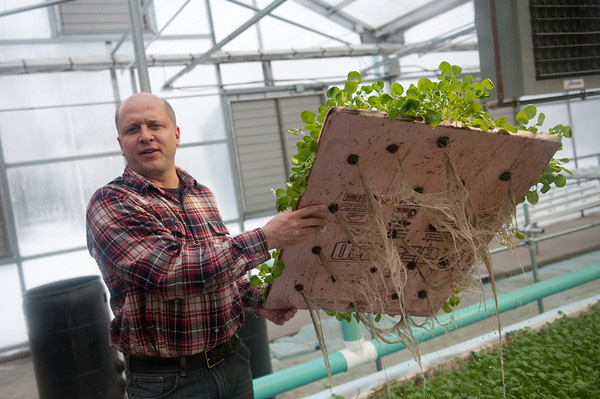
Not too far from the Twin Cities, out on the now-frozen agricultural land surrounding Baldwin, WI, there are fish. Thousands of fish. They teem and circle, feed and jostle for space in big blue tanks located inside of a greenhouse complex run by an enterprise called Future Farm Food and Fuel.
Future Farm is a combination of aquaculture and hydroponics, which is to say fish raised for their meat and plants grown floating on rafts, their roots dangling into nutrient-rich water. But beyond being a place where things grow and are harvested, the Farm is a kind of commercial laboratory, an experiment to see if innovative energy strategies and sustainable bio-systems can produce a model for the agriculture of tomorrow.
The system used on the farm is mostly self-contained and extremely water efficient. “A typical head of lettuce in Arizona or California might take 22 gallons of water,” says Steve Meyer (above), who is Future Farm’s co-owner and director of operations. “In something like this, it’d be about four. It’s very green.”

The farm’s fish of choice is the tilapia, a freshwater-dweller that has become a global food staple. “It grows so fast,” notes Meyer. “You can take tilapia at half a gram and grow them to a pound and a quarter in six months.”
At the heart of the Future Farm’s operation are two big loops of water. The first loop transfers heat — it connects the farm to its neighbor and partner business, the Baldwin Dairy. The second loop transfers nutrients and connects large blue tanks teeming with tilapia to large floating rafts of hydroponic salad greens and herbs.
The heat-providing loop came online recently, in December 2010. An anaerobic digester on the nearby Baldwin Dairy takes its cows’ ample manure and turns it into methane gas, which is burned off to heat the loop’s water. That water is pumped over to the Future Farm, where it does two things:
First, it provides radiant heat to the building by running through its specially designed floor.
Second, it heats the water in the second loop without actually co-mingling with it; the pipes just run adjacent to one another and exchange heat.

“The number one expense for aquaculture in this environment would be heat,” says Meyer. “The footprint of this building is 27,000 square feet. The estimate of heat loss for this building was about 4.5 million BTUs / hour heat loss — we’re heating it with about 1.3 million BTUs. We were able to design and run this place so it doesn’t need nearly the heat that you’d expect.”
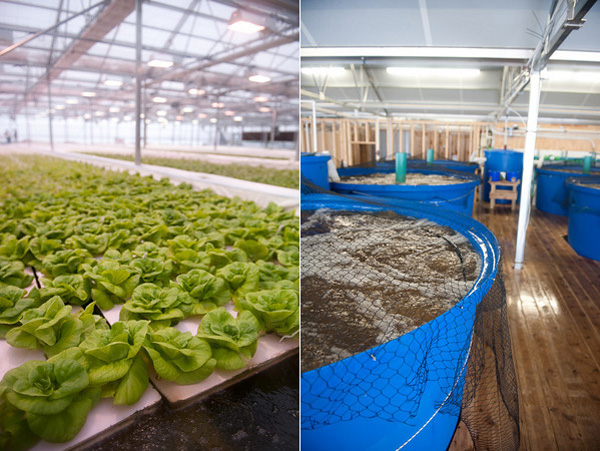
Loop two cycles tilapia effluent (in essence: fish crap) from the fish tanks over to the farm’s floating rafts of hydroponic plants, where it acts as a fertilizer.
“The biggest challenge for aquaculture is your discharge,” says Meyer. “You need fast circulating water to keep your ammonia low. With aquaponics, the plants take care of that for you. You just constantly recirculate your water — you grow your fish, you run your water out into your grow bays, it goes out, it comes back, and you just keep reusing it… you dump very little water.”
Although the Farm makes revenue on its plants by a wide margin (as much as 10-to-1, according to Meyer) it’s hard not to be fascinated by the Wisconsin winter-dwelling tropical tilapia. Among other things, the fish is both a champion survivor and a gastronomic jack-of-all-trades. “It’s a firm, white meat fish that has no flavor, so it takes flavor well — a chef can do a lot with it,” says Meyer.
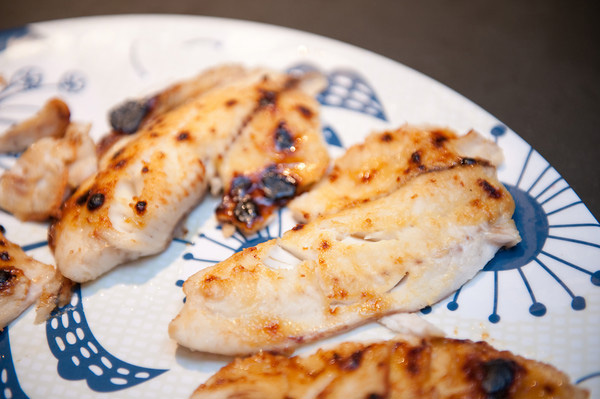
(On our way out of the Future Farm, Meyer presented us with a bag of tilapia fillets. Photographer Becca Dilley’s mother, Ingrid, improvised an impromptu treatment for the fillets: a rub with chicken variety Better Than Bouillon, then a trip through the broiler, and then some baking. The fish tasted delicious — mild, nicely browned and crusted, taking on some of the salt and chicken flavor of the boullion while retaining a firm, flaky texture.)
You may have tasted the farm’s product; Birchwood Cafe in Seward has worked with the Farm, and its vegetables and herbs are sold at Twin Cities stores and markets. At the moment, the farm only produces about 10,000 pounds of tilapia a year, but Meyer hopes to scale up to 50,000 in years to come. And while he hopes to eventually sell live product at restaurants and markets, he currently ships the farm’s output to the Star Prairie Trout Farm for processing and packing.
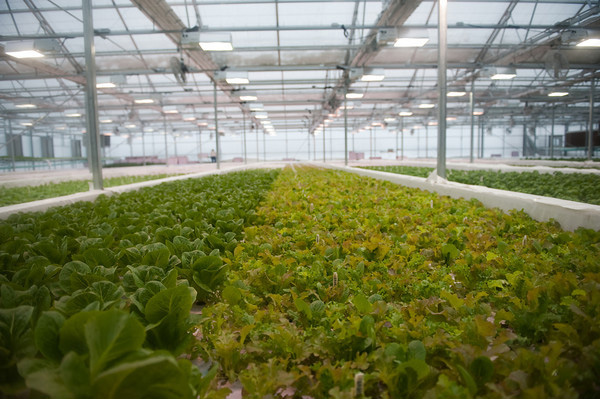
After a challenging start in January 2010, the system is beginning to take on a life of its own. “Right now it’s pretty much on autopilot,” says employee Ryan Coghlan. “It basically runs itself.” Help from university scholars in Hawaii and an aquaculture consultant Marc Cardoso of the Ecogenics Research Center in Tennessee was key to getting to this point; the Future Farm represents a confluence of knowledge and tinkering.
“The exciting thing is growing stuff,” says Meyer. “Bringing in little fish, and then growing plants off of the fish effluent, and seeing that you can turn a crop of lettuce in 30 days.”
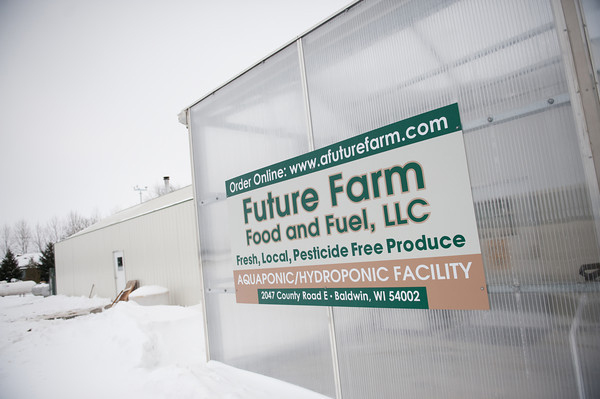

Fascinating story, Jim. It’s really encouraging to see this kind of innovative stuff going on out in the countryside. I am constantly amazed at the vitality and creativity you find in rural western Wisconsin these days.
Thanks~ Brett
wow, that’s awesome, reminds me of Polyface in Virgina, taking the waste of one and moving it to the input of another, it’s the foundation of the green economy!
Amazing. Thanks for this story, it’s inspiring.
This is fantastic and I’m going to be on the lookout for their products (and requesting them in stores that don’t currently carry them)!
“It’s a firm, white meat fish that has no flavor, so it takes flavor well — a chef can do a lot with it,”
Yeah, that’s exactly what I want out of my food–no flavor. I think we should just switch to an all gruel diet.
Do they give tours? I’d love to go there in person sometime.